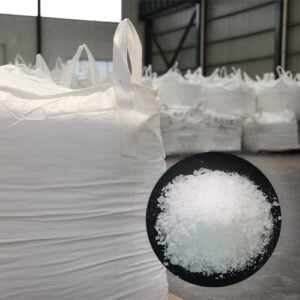Einführung
In the realm of food preservation, the search for effective and safe methods continues to evolve. Sodium formate, a versatile compound with unique chemical properties, raises intriguing questions about its potential as a food preservative. This article delves into the complexities surrounding sodium formate’s application in food preservation, exploring its properties, regulatory considerations, and its viability as a preservative in modern food industries.
Verständnis Natriumformiat as a Preservative
Was ist Natriumformiat?
Sodium formate (HCOONa) is a sodium salt derived from formic acid (HCOOH). Its water solubility and chemical stability have led to its utilization in various industries. The prospect of employing sodium formate as a food preservative invites a thorough examination of its effects and implications.
Sodium Formate’s Properties and Food Preservation
1. Preservative Properties
Sodium formate exhibits properties that could be beneficial for food preservation. Its antimicrobial effects have the potential to inhibit the growth of bacteria and fungi, thereby extending the shelf life of perishable foods.
2. pH-Regulierung
Maintaining the proper pH is essential in food preservation. Sodium formate’s pH-regulating properties could play a role in preserving acidic foods, inhibiting spoilage microorganisms and enhancing product stability.
3. Antioxidant Potential
Studies suggest that sodium formate may possess antioxidant properties. Antioxidants are valuable in preventing the oxidation of fats and oils in food, which can lead to rancidity and decreased quality.
Challenges and Considerations

1. Regulatory Approval
Before considering sodium formate as a food preservative, regulatory agencies such as the FDA need to evaluate its safety and effectiveness. Rigorous testing and assessments are essential to ensure its suitability for use in the food industry.
2. Taste and Flavor Impact
Sodium formate’s potential impact on taste and flavor must be carefully evaluated. Any alteration to the sensory qualities of food products could affect consumer acceptance.
3. Compatibility with Different Foods
Different food products have unique characteristics and compositions. Assessing sodium formate’s effectiveness and safety across various foods is crucial to determine its versatility as a preservative.
Viability in Modern Food Industries

1. Organic and Natural Trends
Sodium formate’s use as a food preservative aligns with the growing demand for natural and organic food products. Its potential as a less synthetic alternative could resonate with consumers seeking cleaner labels.
2. Advanced Food Packaging
Incorporating sodium formate into packaging materials could offer a dual approach to food preservation. The preservative properties of sodium formate could complement innovative packaging technologies that extend shelf life.
FAQ about Sodium Formate as a Food Preservative
Q1: Is sodium formate currently approved as a food preservative?
A1: As of my knowledge cutoff date in September 2021, sodium formate is not widely recognized or approved as a food preservative by regulatory agencies. Any usage in food products would require rigorous testing and regulatory approval.
Q2: Could sodium formate replace traditional food preservatives?
A2: The potential for sodium formate to replace traditional preservatives depends on its efficacy, safety, and regulatory approval. It would need to demonstrate equivalent or superior performance while meeting strict safety standards.
Q3: Are there any food products where sodium formate could be particularly effective as a preservative?
A3: Sodium formate’s potential as a preservative might be more pronounced in acidic foods, where its pH-regulating properties could inhibit the growth of spoilage microorganisms. However, this would require thorough testing and validation.
Q4: Could sodium formate impact the nutritional content of preserved foods?
A4: The impact of sodium formate on the nutritional content of preserved foods would depend on factors such as the concentration used, the type of food, and the processing conditions. Comprehensive analysis would be necessary.
Fazit
The prospect of sodium formate as a potential food preservative introduces a complex landscape that encompasses scientific exploration, regulatory evaluations, and consumer preferences. While its properties suggest promise, its viability hinges on extensive research to determine its safety, efficacy, and compatibility with a range of foods. The journey to establish sodium formate as a food preservative underscores the dynamic nature of the food industry and the continuous pursuit of innovative solutions for enhancing food safety and shelf life.


